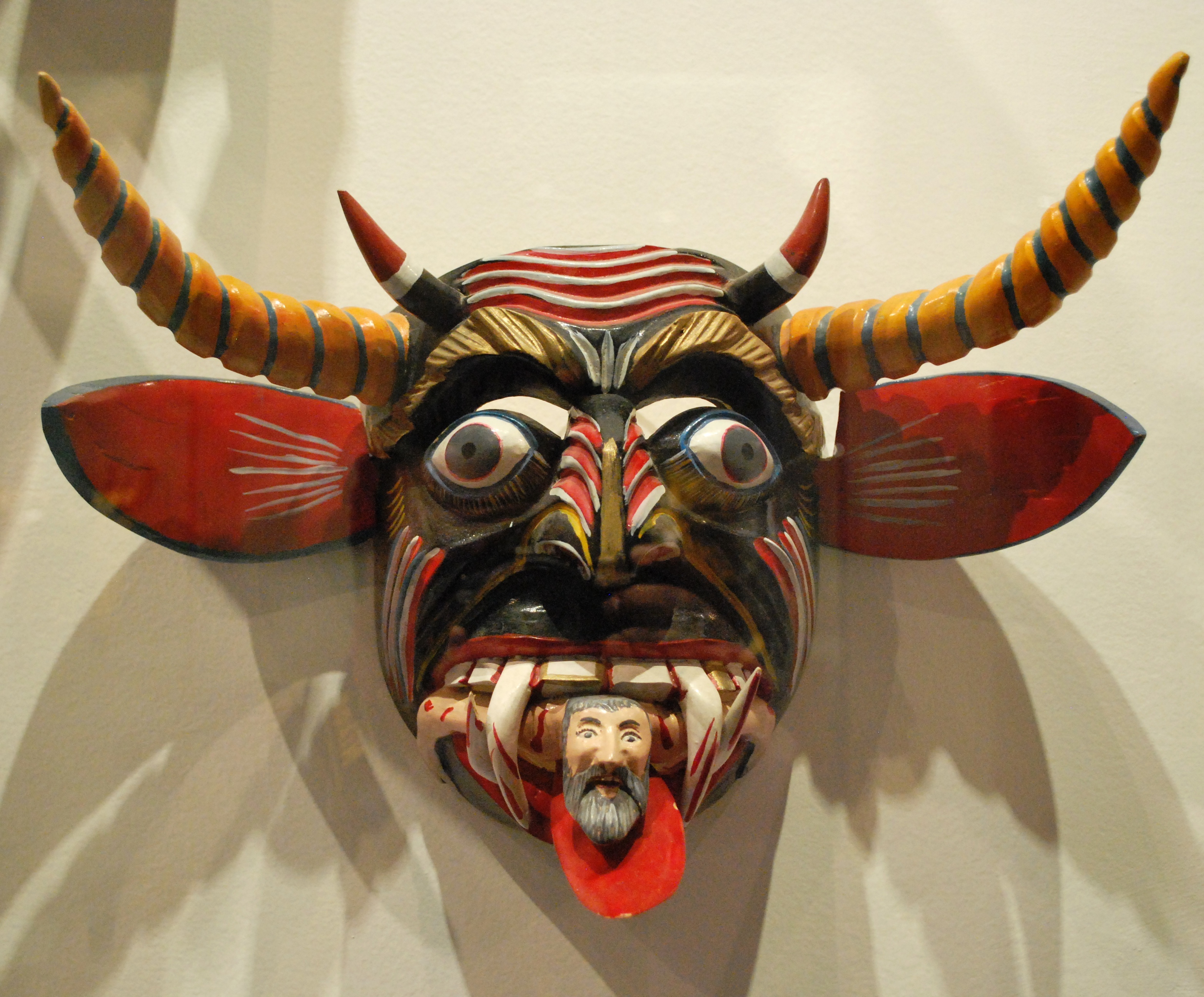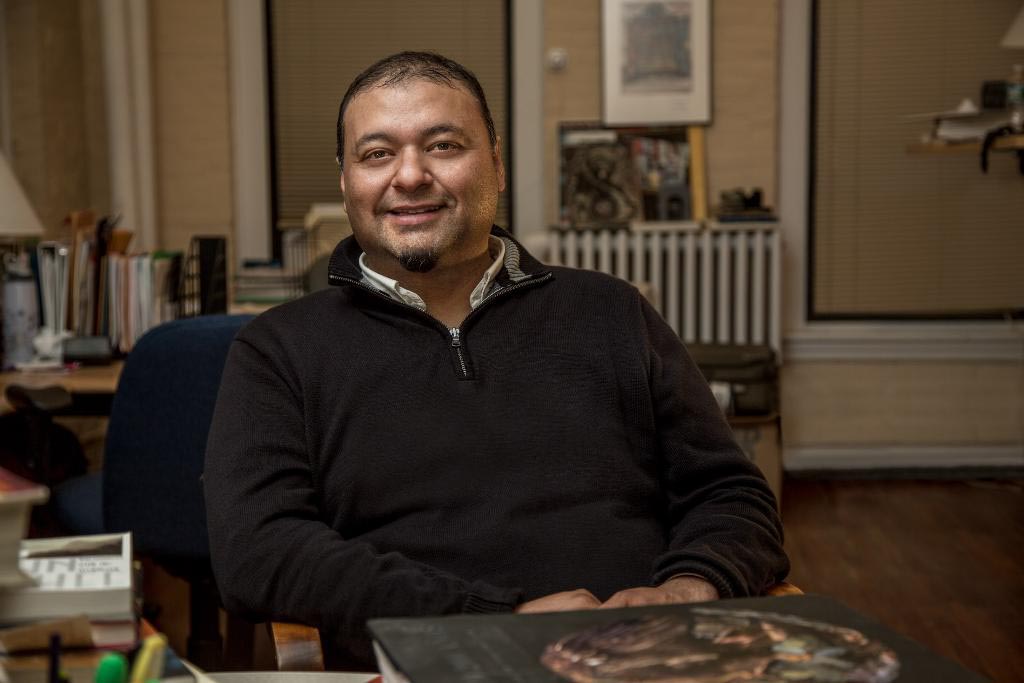
- Details
- By Pedro Noé Morales
Of the many vivid memories that stand out from my childhood in Mexico, the Christmas tradition of “pastorelas” are front and center. Pastorelas are nowadays two-act plays teaching the story of the birth of Christ through the eyes of humble shepherds. Back in the early years of the Spanish invasion of our lands, they were one-act performances meant to help Franciscan friars spread Christianity to the masses.
In a pastorela, shepherds are visited by the Archangel Michael, who directs them to go find the baby Jesus. However, the devil sets out to trick them and confuse them, to prevent them from reaching their destination. Many funny situations ensue as the humble bunch of shepherds make their way singing, conversing, and dealing with the changing circumstances influenced by the red devil figure in the play. Ultimately, the Archangel intervenes and helps keep the devil away, so they can unite with baby Jesus.
I recall with warm feelings the deep sense of community that endured after each performance. Spiked eggnog was sold for adults, while hot wintery drinks were sold for the kids. It was customary for people to linger and socialize at the end of each play, which was performed daily from the 16th to the 24th of December and culminated with the feast of the nativity on the 25th. Someone’s child played a sheep or a donkey, and some folks would be around asking them about it after the show; and someone played Joseph or Mary, with a similar number of groupies in tow; but the family that had the most people swarming about them was the one whose baby played the baby Jesus — the star of the evening for sure.
It was only much later, once I found myself far away and removed from these community festivities, that I began to recognize that some aspects of them seemed hollow, if not fake. I could not shake the feeling that as wonderful and positive as these events were for families, if I were an alien trying to make sense of how we as Mexicans got to this point, it would be a hard task to reconcile where this Native society was before the arrivals of the Spanish invaders with where they have landed as a result.
I would have to learn that throughout ancient Mesoamerica, it took the learned ancestors thousands of years of careful observation of nature to distill clear understanding and protocols for communicating with the various gods and to interpret their will. That knowledge was gained through a process throughout epochs and the rule of different ethnic groups, until, by the time the Aztec empire rose to power in the early 1300s, religious understanding was based on well-established precedents that helped cement their role firmly in the larger order of the cosmos.
Want more Native News? Get the free daily newsletter today.
For the Aztecs, everything came into existence because of the gods. This intimate relationship with the sacred left no room for doubt or faith, because it was based on knowing. This knowledge produced order, prosperity, and meaning. A key part of strengthening their communication with deities required massive ceremonial enactments at the hearts of the city’s ceremonial centers. The festivities were an all-out affair, with elaborate dancing and music enveloped in aromatic incense smoke spewing from massive and ornate ceramic vessels. Food made of corn and chili peppers could be found everywhere, professional orators related stories for all to hear in the main square, and older people were allowed to get drunk on pulque. These lively celebrations came to an end with the arrival of the invaders.
Even before they set foot in the Aztec capital of Tenochtitlan, Spaniards heard from the various communities they encountered about the city’s splendor and grandeur. Nothing captures the imagination as vividly as this passage from Bernal Díaz del Castillo, who was a foot soldier in Cortez’s army when they arrived there. His first-person account, from his book The True History of the Discovery and Conquest of New Spain, narrates that experience, so incredible that “some of our soldiers even asked whether the things that we saw were not a dream… I do not know how to describe it, seeing things as we did that had never been heard of or seen before, not even dreamed about.”
What the Spaniards saw was a powerful, well-run, highly sophisticated society that worked without the intervention or need of a Christian god. One can only imagine the daunting task Franciscan friars faced when they had to label every custom of the Natives as “evil” or “idolatrous,” when the Natives had no concept of the devil, and what the friars called idolatry was deeply rooted devotion to gods that had proven true for millennia.
By contrast, the Christian god required Natives to swallow what Christians called “the mysteries of faith,” such as the idea of the Trinity and the Immaculate Conception. Beyond that, they also had to hear the Bible stories, which came out of completely foreign geographic and linguistic contexts.
When Tenochtitlan fell, Natives were forced to abandon the certainty of knowing their gods in favor of the uncertainty of belief in a god who was far removed from and clearly not interested in them. The epochs-long tradition connecting peoples with their gods was broken, although not entirely destroyed.
The Franciscans were cunning, and for a few years after the conquest, they carefully observed the local population’s traditions and behaviors. They soon found an avenue to help them spread their evangelizing efforts by taking over the well-understood festivals and popular theatrical performances rooted in local traditions. They had learned from their experiences in Italy and Spain to use theatrical, popular events to educate the masses about the most relevant parts of the story of Christ — the story of Christmas being of the utmost importance.
The cities of Cuernavaca, Morelos, and Acolman, a small town near the ancient city of Teotihuacan, are frequently cited as the places were Franciscans first tried these public performances, the story of the nativity of baby Jesus in a one-act play they called a pastorela, circa 1528.
The friars recruited and employed professional actors, musicians, dancers, and orators who routinely performed in the festivities to Native gods, thus capturing the interest of the local populations. However, it wasn’t long before Natives began to twist and turn the plot to depict the reality of what they saw happening around them. In time, the well-meaning educational play that featured one baby god and one red devil grew to depict the devil as a twin of the god, equal if not superior to the Archangel. The one long-bearded devil (only Spaniards had beards at the time) turned into as many as seven devils, always abusing, distracting, and limiting the path of shepherds.
The Spaniards made sure to portray Natives as silly and laughable and therefore inferior to them in these plays, but over time Natives turned the plot so much that it caused the Church authorities to begin censoring them, citing faults such as idolatry and lack of decorum. The plays were said to be full of devils, foul language, and deplorable behavior, offensive to the Church and to God.
It was not until 1809, with Mexican author and public intellectual José Joaquín Fernández Lizardi’s Pastorela en Dos Actos, that a presentation was introduced to counteract the bad influence that the Indigenous twist on the Christmas tale had in colonial society.
From then on, the Church, in coordination with the colonial authorities put the Christmas (and all other public) performance under the power of Catholic censors, who were charged with ensuring that proper Christian doctrine was employed and that language and behavior were properly decorous.
That was the birth of the beloved pastorelas of my childhood, a uniquely Church-curated Mexican Christmas tradition. I now understand and cherish the sense of devotion and community people bring to them, and recognize it as something ancient in origin perpetuated by Native ancestors, even if the devotion is fused with the Christian messiah.
But if I keep my view as an alien observer, I would have to admit the display is a far cry from the epoch when ancestors knew and trusted their own relations with their gods, and there was no need to believe in any others, Christian or otherwise. The introduction of the devil into the Native consciousness was to grow and multiply, as it did in the Native representation of the Christmas tale, only these devils were not red, but white.
The colonizers’ big achievement, beside the destruction of civilizations far better than their own, was to introduce doubt where there was certainty, and the need for faith and belief in their god where there was none. Ultimately, the Native devotion to family and community rose above the terror of its colonized history and carried us on, even as the white devils continue to insist on blocking and limiting our paths today.
More Stories Like This
Another Weapon of Mass DestructionColorado cannot heal until it confronts Sand Creek honestly
Native American Mothers Deserve to Live
Technology Rooted in Tradition is Strengthening Cherokee Nation
The Lumbee Tribe of North Carolina: #575
Help us defend tribal sovereignty.
At Native News Online, our mission is rooted in telling the stories that strengthen sovereignty and uplift Indigenous voices — not just at year’s end, but every single day.
Because of your generosity last year, we were able to keep our reporters on the ground in tribal communities, at national gatherings and in the halls of Congress — covering the issues that matter most to Indian Country: sovereignty, culture, education, health and economic opportunity.
That support sustained us through a tough year in 2025. Now, as we look to the year ahead, we need your help right now to ensure warrior journalism remains strong — reporting that defends tribal sovereignty, amplifies Native truth, and holds power accountable.
 The stakes couldn't be higher. Your support keeps Native voices heard, Native stories told and Native sovereignty defended.
The stakes couldn't be higher. Your support keeps Native voices heard, Native stories told and Native sovereignty defended.
Stand with Warrior Journalism today.
Levi Rickert (Potawatomi), Editor & Publisher

